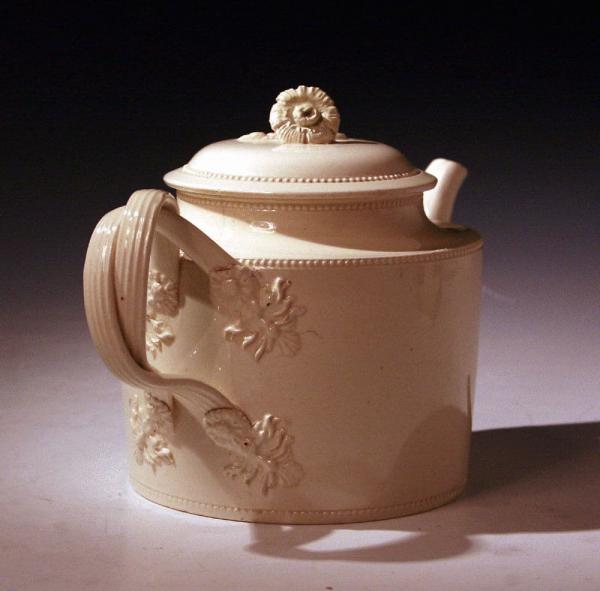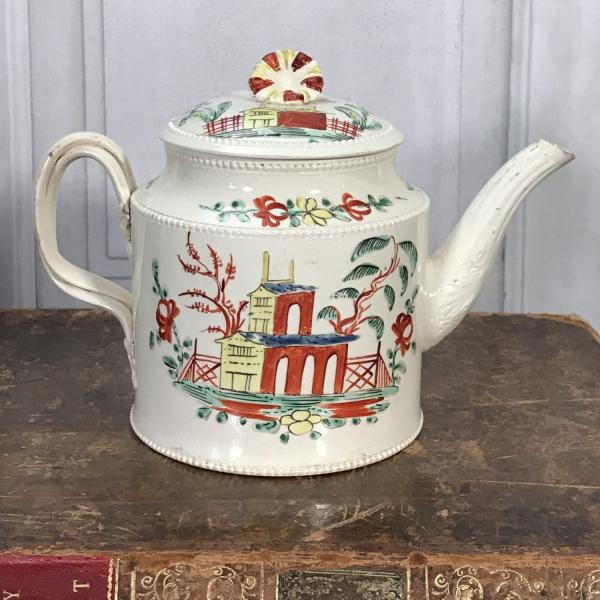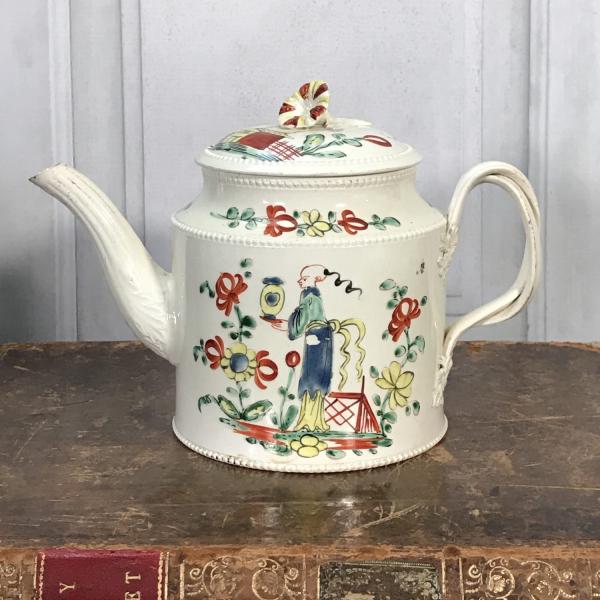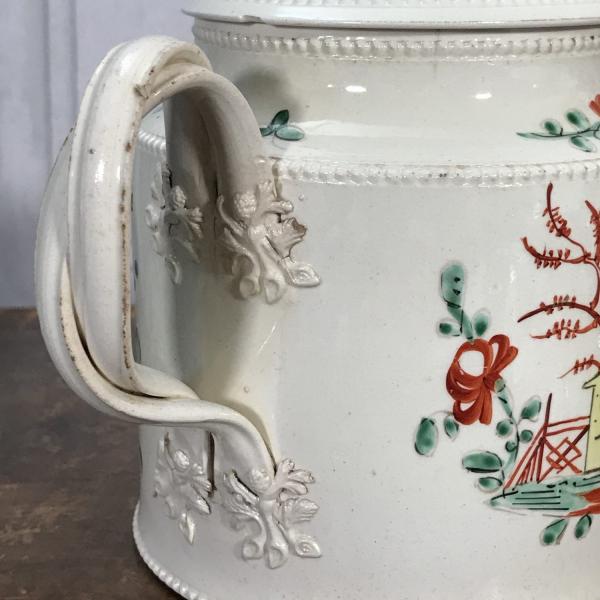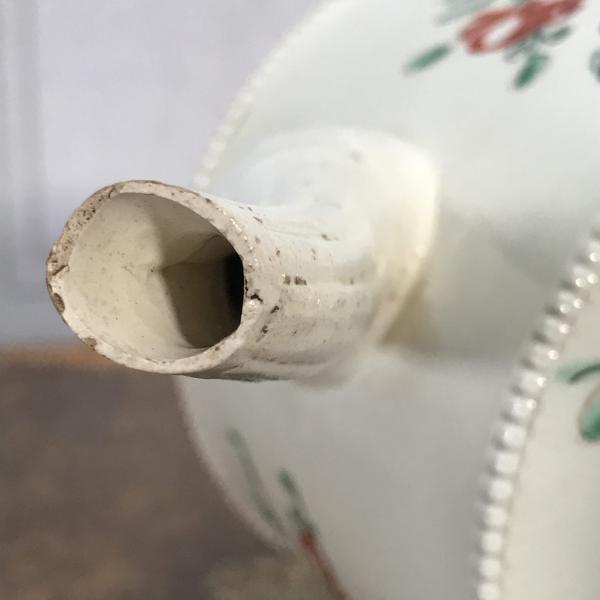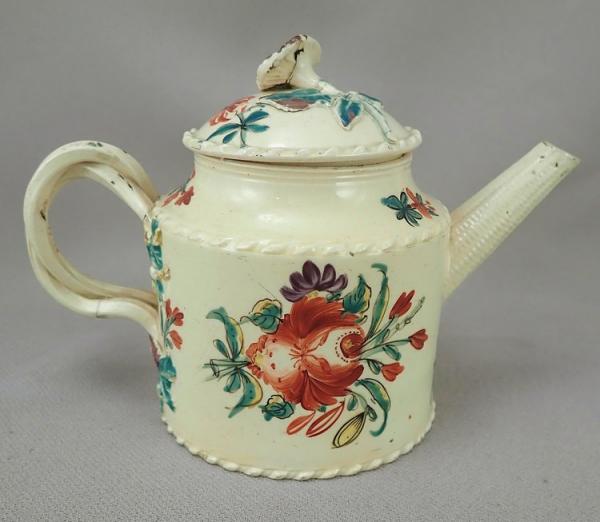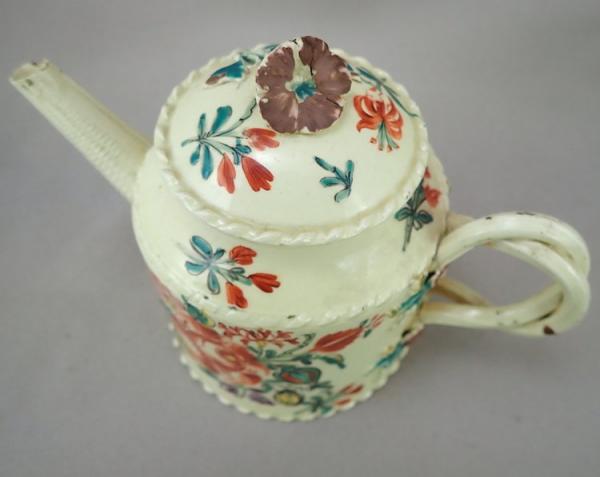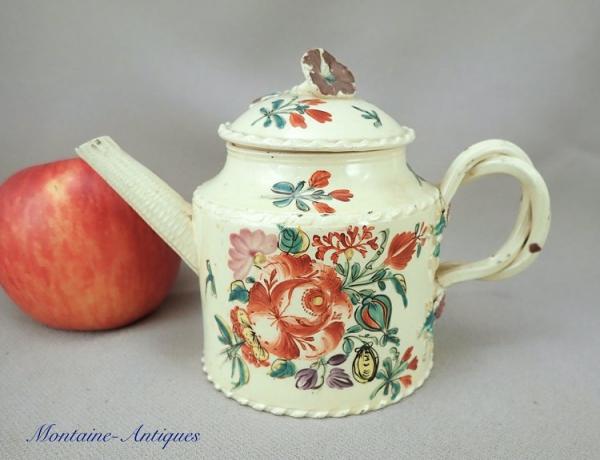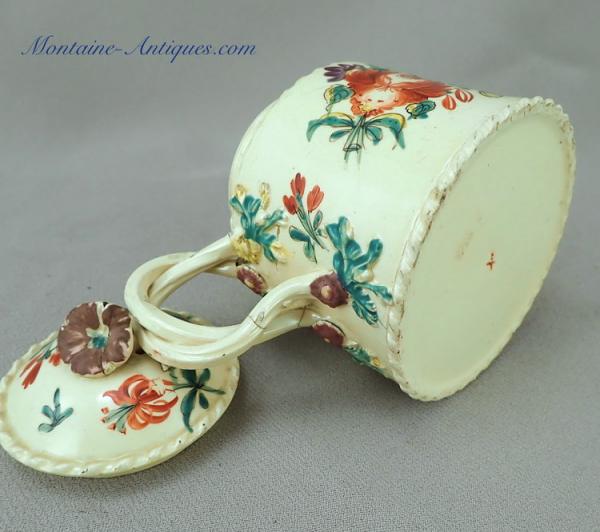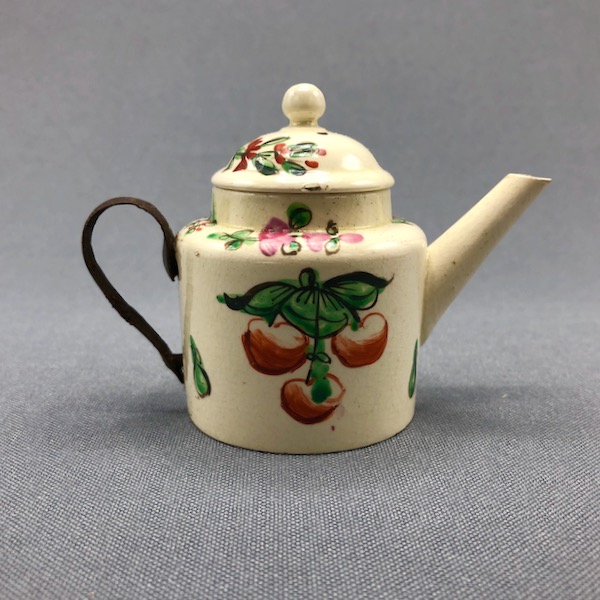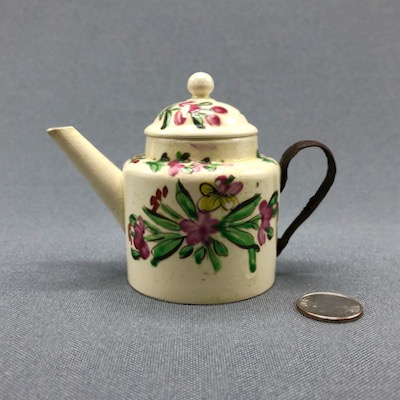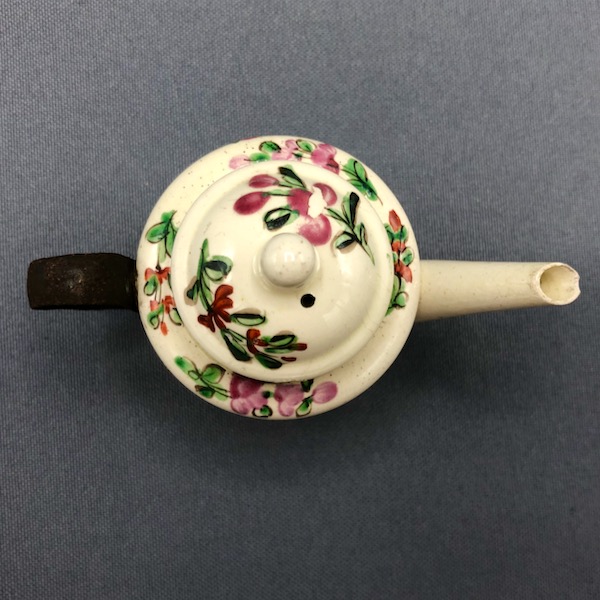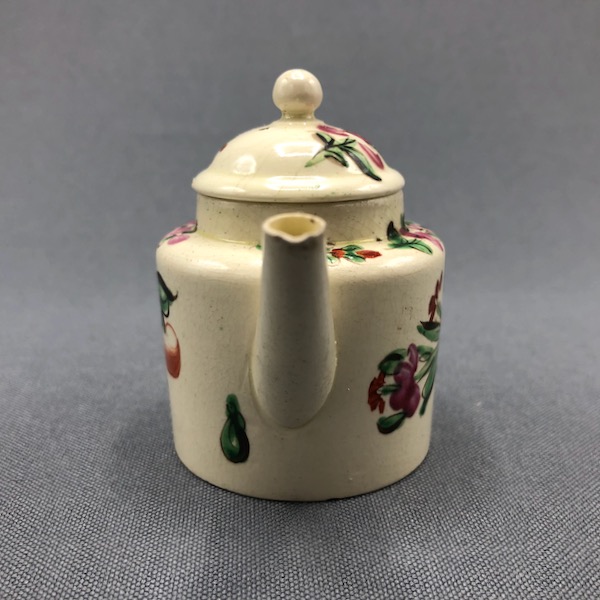2023-4-13
儘管德國的梅森瓷器一枝獨秀,可是世界上真正喜歡瓷器也對瓷器作出重大貢獻的國家應該是英國。英國人愛喝,喝茶喝酒喝奶和巧克力喝咖啡喝威士忌喝伏特加,喝的東西是液體都得用瓷器來盛啊,於是就促進了世界上瓷器的傳播和發展。梅森的瓷器人高馬大,主要是供應西方世界的上流社會,英國的瓷器則是遍地開花面向普羅大眾和全世界。她不但發明了骨瓷,在軟瓷和珍珠瓷方面也成果不俗,留下很多絕世的精品,現在就說說曾經在歷史上曇花一現(1770-1881)可產品卻驚世駭俗大名鼎鼎餘音繞梁的利茲(Leeds)珍珠瓷(Pearlware)吧。
Antique Leeds Pottery plain undecorated creamware teapot late 18th century. The creamware glaze is of high quality typical of Leeds Pottery. The tea-pot cover has a flower head finial and the strap handles are beautifully modeled and applied. A classic piece from one of the major manufacturers of creamware pottery in the late 18th century in England. Designs from this early period of pottery manufacture are classic in their elegance, many shapes produced were based on sterling silver pieces.
Leeds Pottery was founded in 1770 by Richard Humble and the
brothers John and Joshua Green. The Greens’ cousin Savile Green
and an entrepreneur William Hartley joined soon after. It was as
Humble, Hartley, Greens & Company that they were to become
known for decorative tableware. Their best years for art pottery
started around 1780 and then spanned barely half a century. The
ongoing series of mergers, closures, and bankruptcies continued
until the company closed for good in 1881. By that time they had
become focused on producing less decorative utilitarian ware.
They were by far the largest of the thirty-five potteries in Leeds,
with only five of those recorded as having produced similar wares.
The bulk of Leeds Pottery’s production was and remained
creamware, with a translucent lead glaze and hardly ever
decorated. But they also made highly decorative examples of what
might today be called folk art, not the finest bone china, but honest
and expressive everyday pieces of art pottery. Like French faience,
it was the poor man’s porcelain of the time. And, like its French
counterpart, it is highly prized today.
This child’s creamware pottery drum form teapot with painted flowers and cherries stands a mere 2.5 inches high and is just over 3.5 inches from handle to spout. It was made in England during the 4th quarter of the 18th century. At some point in its early history, I imagine a child dropped the teapot during play teatime and the original handle broke off. Luckily for the child and eventually for me, a tinsmith made a metal replacement handle and the imaginary tea was able to flow again.
|






